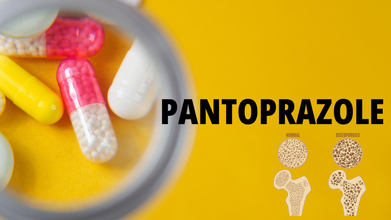- Health Conditions A-Z
- Health & Wellness
- Nutrition
- Fitness
- Health News
- Ayurveda
- Videos
- Medicine A-Z
- Parenting
Yes, You Can Improve Your Sex Life, Libido After 50

Image Credits: Canva
We talk openly about cholesterol, sciatica, cavities, arthritis, and high blood pressure but conversations about sexual and reproductive health matters remain unspoken. As we get older, however, tending to intimacy is also essential. Having a healthy sex life is part of a person's overall health, with thoroughly documented physical and mental health benefits.
Sexual health is a vital part of overall wellness, but it's one of the most hushed-up subjects for seniors. Just as individuals are willing to talk about routine age-related issues like arthritis, high blood pressure, or sciatica, conversations regarding sexual wellness are still off-limits. Nonetheless, a healthy sex drive and active sexual life after 50 is not just feasible but healthy for body and mind as well.
With aging, there are physiological, hormonal, and psychological changes that may impact libido and sexual function. The levels of testosterone and estrogen reduce naturally, resulting in a diminished sex drive among both genders. Furthermore, certain diseases like diabetes, cardiovascular disease, and high cholesterol can impair sexual health by weakening blood flow and nerve sensitivity.
In men, decreasing testosterone levels may lead to erectile dysfunction (ED), reduced energy, and a lower sex drive. Women have symptoms of menopause, including vaginal dryness, decreased arousal, and pain during intercourse. The psychological effect of aging—stress, anxiety, or body image issues—may also add to reduced sex drive.
Why Is Sexual Health Important After 50?
Sexual health is essential to the upkeep of emotional closeness and general well-being. Studies indicate that frequent sex has many advantages, such as decreased stress and anxiety, better cardiovascular health through lower blood pressure, and a more robust immune system. It also leads to improved sleep, increased self-esteem, and more intimate relationship satisfaction. Though society tends to associate sexuality with age, several people still have a healthy sex life well past their golden years. The secret to keeping intimacy alive is not about age but more about focusing on staying healthy, maintaining openness in communication, and flexibility with the body's natural changes across time.
Common Sexual Challenges Faced After 50
In Women:
- Decline in libido during menopause: Decrease in estrogen levels causes reduced sexual interest and arousal.
- Vaginal dryness: Decreased estrogen leads to decreased lubrication, and sex is painful.
- Body image concerns: Increased weight, skin changes, and other aspects of aging may affect confidence and sexual desire.
- Painful sex: Thin vaginal walls lead to pain or discomfort during sex.
For Men:
- Erectile dysfunction (ED): Decreased testosterone and decreased blood flow make it more difficult to attain and sustain an erection.
- Delayed arousal and orgasm: Men can experience that they take longer to become aroused and reach orgasm.
- Prostate problems: Medical conditions such as benign prostatic hyperplasia (BPH) and prostate cancer can impair sexual function.
- Reduced endurance: Aging can result in decreased energy levels, impacting sexual performance and frequency.
How to Improve Libido After 50?
1. Focus on Physical Health
Your overall health has a big impact on your sex drive. Exercise regularly, eat well, and control chronic diseases to improve sexual function. Strength training, cardiovascular exercise, and yoga improve blood flow, endurance, and flexibility, all of which contribute to a healthy sex life.
Nutritional changes, such as incorporating heart-healthy foods like nuts, leafy greens, and omega-3 fatty acids, can boost circulation and hormonal balance. Limiting alcohol, smoking, and processed foods also benefits sexual health.
2. Talk to Your Doctor
Many age-related sexual health issues can be managed with medical interventions. If you’re experiencing ED, vaginal dryness, or low libido, consult your healthcare provider about available treatments, including:
- Hormone replacement therapy (HRT) in men and women
- Drugs like sildenafil (Viagra) or tadalafil (Cialis) for erectile dysfunction
- Vaginal estrogen creams or lubricants in women with menopause
- Lifestyle changes and other therapies such as acupuncture or herbal supplements
3. Overcome Psychological Barriers
Emotional and mental well-being are essential to sexual desire. Stress, anxiety, depression, and previous negative experiences can suppress libido. Mindfulness, meditation, and cognitive behavioral therapy (CBT) can assist in overcoming psychological barriers to intimacy.
Communication with a partner is also helpful in dispelling concerns and building intimacy. If needed, couples counseling or sex therapy can offer useful tools for rekindling desire.
4. Stay Sexually Active
The "use it or lose it" rule holds true for sexual health. Frequent sex can enhance libido by maintaining blood flow to sexual organs active. If penetration is painful or difficult, try other types of intimacy like sensual massage, oral sex, or discovering new erogenous zones. Lubricants and extended foreplay can make sex more enjoyable.
5. Think About Testosterone and Hormone Therapy
In cases of a drastic drop in men's testosterone, testosterone replacement therapy (TRT) is worth considering. Be sure to get medical advice in order to assess the risks vs. benefits of TRT because it is not for every body. Women could also consider using bioidentical hormone treatment (BHT) or non-hormonal alternatives to address menopause symptomology and spice up their libidos.
6. Address Side Effects of Medication
Some medications, such as antidepressants, beta-blockers, and cholesterol-lowering medications, may affect libido and sexual functioning. If you feel that your medication may be affecting your sex drive, discuss alternatives or changes with your physician.
Why It Is Important to Talk To Your Partner?
A satisfying sexual relationship depends on open and honest communication. As we get older, changes in libido, physical comfort, and emotional intimacy can affect closeness. Here's why talking to your partner about these changes is important:
If your libido has decreased or sex has become uncomfortable, don't act otherwise. Be honest about your feelings and inform your partner when something feels off.
Varying sexual desire is normal. Rather than ignoring the situation, together come to a compromise that pleases both of you.
When intercourse hurts, try new positions or other forms of intimacy, including genital play or oral sex, to continue an enjoyable connection.
Even the best relationships change over time. While new relationships tend to create a rush of libido, that passion may wane. To revive the flame, revisit things that excited you when you first met. Recreating romantic moments from your past can help rekindle intimacy and connection, making your relationship stronger than ever.
One of the largest obstacles to having a healthy sex life later in life is sexual health stigma. Older adults often shy away from talking about their issues because they are embarrassed, misinformed, or afraid of being judged. Silence can result in misunderstandings, untreated medical conditions, and lower relationship satisfaction.
This Common Heartburn Medicine Causes Bone Loss And Fractures, According To Doctor; Here Are Safer Alternatives

Credits: iStock
Of the many medicines that we consume on a day to day basis, we are not aware of how gradually they are actually making our health worse. One medicine that is common in many households, especially in India households, as points Dr Obaidur Rahman, Ortho and Sports Surgeon is pantoprazole, popularly sold under the name PAN40, PAN Top or PAN D. These medicines are used to treat and relieve symptoms of heartburn, which is a common symptom of acid reflux and GERD.
"A patient came to me, he was an 80-year-old male. He has a habit of taking this tablet regularly, and because of that he suffered an osteoporotic fracture. This means he fell while walking and fractured," points out Dr Rahman.
He says that many people, old and young, alike, have a habit of taking this pill like a multivitamin. In fact, they have substituted with pro and prebiotics and assume that it helps with digestion. However, he points out, "If you take this regularly, your gastric mucosa stops responding against proper acid production. And there is also an impairment in digestion."
He says that in clinical practice, it has been found that this common household medicine, which is often procured as over-the-counter or OTC medicine, meaning, without prescription, could cause Vitamin B12 deficiency, and magnesium deficiency.
What Does The Science Say About Pantoprazole Use?
As per a 2023 study published in the journal BioMed Research International, pantoprazole cause bone loss, which could be prevented by adding octreotide.
The study analyzed the serum levels of calcium, phosphorus, and ALP before starting the treatment, and at the end of 12 weeks of treatment on pantoprazole, significant decline in calcium levels were noticed, as compared with other groups. The study also found that octreotide significantly prevented the effect of pantoprazole on the serum levels of calcium and ALP.
The study also found that pantoprazole decreased femoral bone density and femoral BMAD. Besides this, another decrease was found in the femoral bone weight and volume as well as the trabecular volume.
Another study from 2021, published in the European Journal of Clinical Pharmacology pointed out that 12 patients had major fractures and showed changes in serum Mg2+ and Ca2+ levels over a period of 1 month as well as the animal study also showed ionic imbalance over 8-week treatment with pantoprazole. Bone density measured for the patient at the end of the 1-month treatment was found to be in the osteopenic category, together with the animal study which showed a decrease in femur bone strength for the animal treated with pantoprazole over a period of 8 weeks.
Are There Any Safer Alternatives To Pantoprazole?
Pantoprazole contain Proton Pump Inhibitor (PPI), and prokinetic, long-term use of PPIs is associated with the risk of bone fracture. However, alternatives like Histamine H2-receptor antagonists or H2 blockers are effective alternative that do not cause bone loss, notes a 2020 study published in journal Bone, titled Comparative analysis of the risk of osteoporotic fractures with proton pump inhibitor use and histamine-2 receptor antagonist therapy in elderly women: A nationwide population-based nested case-control study.
The safer alternatives are:
Famotidine (Pepcid, Calmicid, Fluxid, Mylanta AR) is a potent H2 blocker used to manage acidity and heartburn. Studies show that famotidine is not thought to raise the risk of osteoporosis.
Other options: Ranitidine (Zantac - where available, as it was withdrawn in some markets due to safety concerns) and Nizatidine are other H2 blockers.
Note: Health & Me do not encourage discontinuance of any prescribed medicine by a doctor. Before making any change in your medicine schedule, please speak to your doctor/GP.
Cold, Flu, Or Covid? Simple Ways To Differentiate Between The Three

Credits: iStock
This flu season could be brutal, say the early clues that scientists have gathered. This comes as the world already struggles keeping up with the new variants of COVID, however, the COVID rates in the US appears to be low. Though researchers are expecting the virus to circulate more widely in the coming months as people gather for holidays.
This is also the time for common cold. Dr William Schaffner, an infectious disease specialist at Vanderbilt University Medical Center tells the New York Times that if you feel ill, but your symptoms remain only above the neck, that is, a stuffy nose, a sore throat, then it could just be a common cold.
However, if the symptoms lead to hacking cough, and down the neck, which makes your muscles ache and body tired, that it could be a flu or COVID. Due to the similarities in the symptoms, even infectious disease specialists also struggle to tell the difference.
Symptoms To Take A Note Of
COVID
How it begins: Initially, symptoms of COVID can mimic flu-like symptoms
What are the primary symptoms of COVID?
- Loss of taste
- Loss of smell
- Sore throat: the new variants are also causing razor-sharp pain in the throat
- Diarrhea or stomach upset
The biggest difference here is the dry and persistent coughing, which when you have a cold will not be dry in nature.
How it impacts? The COVID may vary from mild to severe
Since the pandemic, Covid has blurred the lines between seasonal infections. Current strains can trigger flu-like fatigue, fever, and cough. But the loss of taste or smell and digestive issues are stronger indicators of Covid.
For confirming COVID, test is the only key. There are now at-home tests available online and at drugstores too. An at-home test could detect both, a flu and COVID.
Common Colds
How it begins: The symptoms of common cold starts gradually.
What are the primary symptoms of Common Cold?
- Stuffy or runny nose
- Sore throat, but not razor-blade like pain
- You may feel pressure in the ears
Here, the biggest difference is also in cough, which is often mucus-filled and chesty. Whereas in COVID, the cough is dry.
How it impacts? While it is annoying in the beginning, especially due to the blocked nose and ears, the congestion clears up overtime and usually doesn’t stop daily activities.
Colds typically start with a tickle in the throat or pressure in the ears before progressing to nasal congestion and cough. Most people can carry on with their routines despite the discomfort.
Flu
How it starts? In many cases, the flu may catch you out of the blues, many describe the onset as sudden.
What are the primary symptoms of Flu?
- Fever
- Chills
- Muscle aches
- Exhaustion
While the cough here is also dry in nature, which may make one get confused with COVID, there is no razor-blade like symptom, which can be used as a marker to differentiate.
How does it impact? Flu often requires bed rest.
Unlike a cold, flu can leave you feeling completely wiped out. Body aches and high fever are distinguishing features, and recovery often takes several days of rest.
Doxycycline: Common Acne Treatment Linked To A Notable Drop In Schizophrenia Risk

Credits: Canva
An antibiotic routinely used for acne has been linked to a lower likelihood of developing schizophrenia. A new investigation from the University of Edinburgh found that adolescents receiving mental health care who were given doxycycline had a reduced chance of being diagnosed with schizophrenia as adults, compared with those who were prescribed other antibiotics.
Although these early findings cannot confirm that doxycycline prevents schizophrenia, the researchers suggest that its influence on immune activity, inflammation, and programmed cell death may help protect the brain from changes associated with the disorder. “Because this research relies on observational records, it cannot prove that doxycycline directly lowers the risk of schizophrenia, so more studies are needed,” the authors explain.
“Even so, the results raise the possibility that doxycycline could play a role in lowering schizophrenia risk among young psychiatric patients and open new avenues for prevention-focused mental health research.”
What Is Schizophrenia?
Schizophrenia is a severe psychiatric disorder that affects about 23 million people worldwide, with most cases identified during late adolescence or early adulthood. The illness can appear suddenly and may bring on psychosis. Typical symptoms include ongoing delusions, hallucinations, disorganized thoughts, restlessness, or withdrawal from others. According to the World Health Organization (WHO), more than two out of three people experiencing psychosis lack access to specialized mental health services.
What Is Doxycycline?
Doxycycline is a broad-acting antibiotic commonly given to teenagers for acne. Some recent research suggests it may also offer certain protective effects for the brain, as it is able to cross the blood-brain barrier. In 2024, Science Alert reported on a Danish study showing that this brain-penetrating antibiotic was associated with a lower likelihood of schizophrenia patients later receiving disability benefits, hinting at how the illness might affect their daily functioning.
To explore this further, child and adolescent psychiatrist Ian Kelleher from the University of Edinburgh led a large international team in reviewing data from more than 56,000 people born in Finland between 1987 and 1997. All had used mental health services in their youth and had been prescribed antibiotics during that time.
The analysis showed that those given doxycycline had a 30 to 35 percent lower chance of developing schizophrenia over the following decade, compared with individuals who had taken other antibiotics. The risk dropped from 2.1 percent in the non-doxycycline group to 1.4 percent in those who used doxycycline.
Doxycycline Linked To A Drop in Schizophrenia Risk
The research team found that taking doxycycline was linked to a 30 to 35 percent reduction in schizophrenia diagnoses over ten years. One theory is that doxycycline may clear an infectious agent that contributes to schizophrenia. Another possibility is that it directly affects inflammation and nerve pathways inside the brain.
Other antibiotics offer hints as well. A 2019 study using stem cells from people with schizophrenia and healthy volunteers showed that minocycline can reduce excessive loss of synapses, a process thought to play a part in schizophrenia. Since both minocycline and doxycycline belong to the tetracycline family, they may share similar properties. Using Finland’s health records, Kelleher’s team noted that nearly half of all psychotic disorders in the population occurred in individuals who had visited adolescent psychiatric services.
The researchers believe this stage of life may offer a valuable period for early intervention, where medications like doxycycline might help reduce the chance of the illness progressing. “Nearly half of the people who develop schizophrenia had earlier contact with child and adolescent mental health services for other issues,” Kelleher says.
“At the moment, we do not have any proven ways to lower the risk of schizophrenia in these young people, which makes these findings encouraging.”
Does Doxycycline Have Side Effects?
Doxycycline is available in two forms, doxycycline monohydrate and doxycycline hyclate, though both tend to cause similar reactions. This list does not include every possible side effect, so consult your medical provider if you are unsure about anything you notice while taking the medication.
Mild doxycycline side effects include:
- Nausea or vomiting
- Diarrhea
- Sensitivity to sunlight
- Sore throat or difficulty swallowing
- Vaginal yeast infection
- Itchy skin and rash (urticaria)
Rare but serious doxycycline side effects include:
- Ulcers in the esophagus
- Severe skin reactions
- Liver problems
- Tooth discoloration in children
- Clostridioides difficile (C. diff) diarrhea
- Intracranial hypertension (increased pressure around the brain)
- Low blood cell counts
Always speak with your healthcare professional before starting or stopping any medication.
© 2024 Bennett, Coleman & Company Limited

